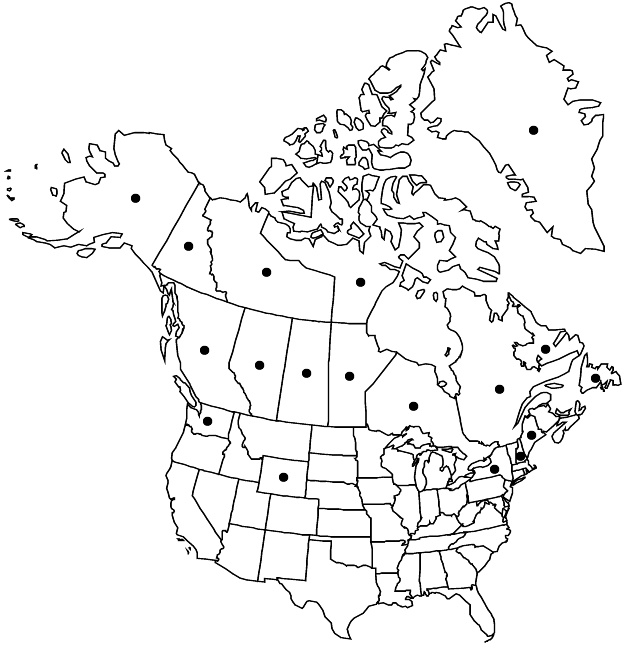Kalmia procumbens
F. Conti et al., Annot. Checkl. Ital. Vasc. Fl. 20. 2005.
Shrubs much-branched and mat-forming, ca. 0.1 m. Twigs terete or slightly 2-angled proximal to node, glabrous or sparsely hairy. Leaves opposite; petiole absent or 0.1–2 mm, glabrous or puberulent; blade ovate or oval to narrowly lanceolate, 0.3–0.8 × 0.2–0.4 cm, margins revolute, apex obtuse, abaxial surface tomentulose, adaxial glabrous or sparsely puberulent toward base, midribs with stalked glands/purple clavate trichomes. Inflorescences terminal, corymbiform racemes or umbels, 2(–6)-flowered, sometimes flowers solitary. Pedicels 5–20 mm. Flowers: sepals crimson, ovate-lanceolate, 1.2–1.5 mm, apex obtuse, surfaces glabrous, margins ciliate; petals (spreading), connate ca. 1/2 their lengths, light to deep pink or white, 3–5 × 2–3.5 mm, glabrous; stamens 5; filaments 2–3 mm; style 0.5–0.8 mm. Capsules 2–3-locular, 3–4 × 3–4 mm, glabrous. Seeds winged, oblong, 0.5–1.4 mm. 2n = 24.
Phenology: Flowering Jun–Aug.
Habitat: Dry to moist, subarctic, arctic, and alpine tundra, coastal marshes
Elevation: 0-2500 m
Distribution

Greenland, Alta., B.C., Man., Nfld. and Labr., N.W.T., Nunavut, Ont., Que., Sask., Yukon, Alaska, Maine, N.H., N.Y., Wash., Wyo., n, c Europe, n Asia.
Discussion
Kalmia procumbens is the only species of the genus that is not endemic to North America. An attractive dwarf shrub, it is sometimes cultivated in rock gardens.
Selected References
None.